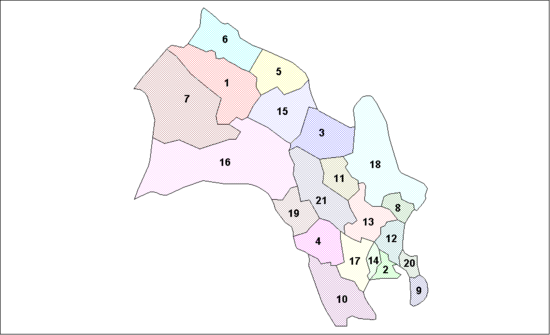Buskerud
Buskerud is a county in Norway, bordering Akershus, Oslo, Oppland, Sogn og Fjordane, Hordaland, Telemark, and Vestfold. The county administration is located in Drammen.
Buskerud | |
|---|---|
 | |
| Population (2004) | 242,331 |
Buskerud extends from Hurum at the Oslofjord to the Halling mountains and Hardanger. Its western part is a mountainous plateau with forested valleys and high, grassy pastures; its eastern part contains a lowland basin with many lakes and streams. Tyrifjorden and Krøderen are the biggest lakes. Numedalslågen, the third longest river in Norway, starting in Hordaland, runs through Buskerud unto Vestfold where it reaches the sea, while river Begna sweeps into lake Sperillen.
The area Ringerike may once have been a small kingdom. During the 10th century, Norway's kings Olav Trygvason and Olav Haraldsson grew up at Bønsnes in Ringerike. Hønefoss is the district capital of Ringerike. In the Numedal valley, silver has been mined in Kongsberg from the 17th century but was discontinued in 1957. Weapons industry had been developed in Kongsberg from 1814, and various high tech industry companies now represent the town's major employers. At Modum there once was a Cobalt pigment production works (Blaafarveværket, "The Blue-Color Works"). Buskerud's coat of arms (created in April, 1966) features a blue bear whose coloring is symbolic of the Blue-Color Works. The silver background of Buskerud's coat of arms represents the silver industry in Kongsberg.
Today, agriculture, lumbering, wood-pulp mills, and industry are the county's main economic activities; ample hydroelectric power is produced by Begna and Rands rivers.
Districts
The county is conventionally divided into traditional districts. These are Eiker, Ringerike, Numedal and Hallingdal.
Municipalities

Buskerud County has a total of 21 municipalities:

